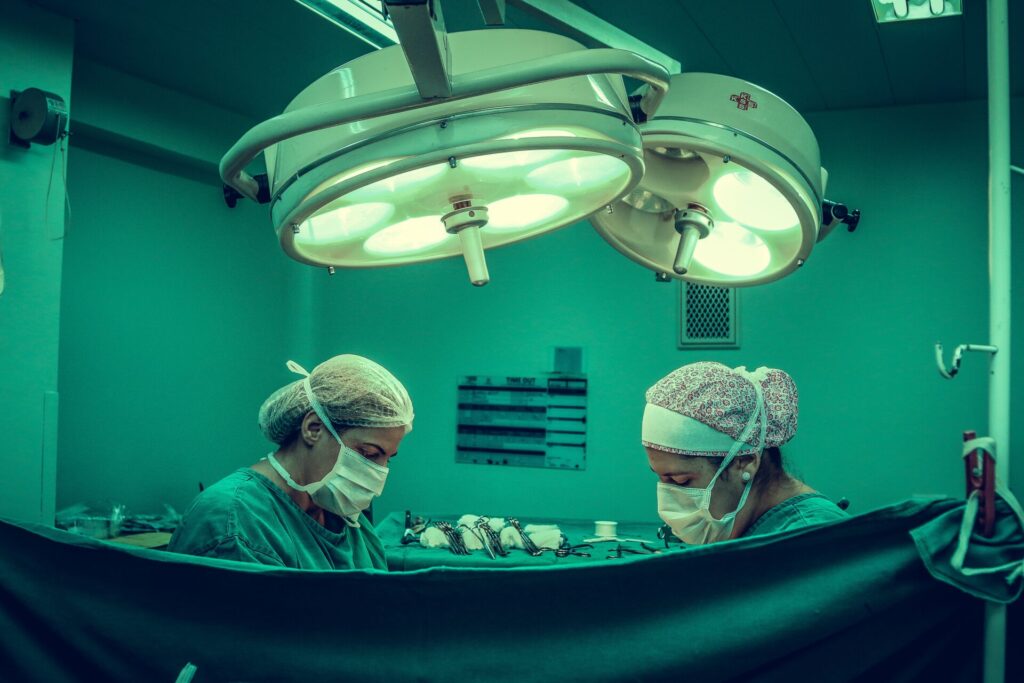How Physical Therapy Helps After Lateral Release
Common surgery for knee injuries is known as lateral release procedures, and while they have a reputation for being successful, they, unfortunately, don’t guarantee you’ll always get fully recovered. That’s where physical therapy comes in to help. Through personalized exercises and movements that target the affected areas of your body, physical therapy helps you understand how to use muscles differently so that the injury does not return or worsen during recovery. This blog post will discuss everything there is to know about how physical therapy can contribute to successful outcomes after a lateral release procedure.
What is Lateral Release Surgery and How Does It Help With Painful Knee Conditions
Lateral release surgery is a procedure used to treat conditions that cause painful knee issues. The procedure targets the soft tissues around the outer side of the knee, where the patella or kneecap slides. The goal of the surgery is to release the tight structures on the outer side of the knee, allowing the kneecap to track properly and ease the pain. This procedure is often recommended for patients with patellofemoral pain syndrome or those experiencing lateral patellar instability. While lateral release surgery can be an effective treatment option for certain knee conditions, it is important to talk to a qualified orthopedic surgeon to determine if the procedure is right for you.
The Benefits of Physical Therapy After Lateral Release Surgery
Recovering from any surgery can be a difficult process, but with the help of physical therapy, patients can make significant strides in their rehabilitation. For those who have undergone lateral release surgery, physical therapy is especially helpful in restoring strength and range of motion to the affected area. Through a carefully-designed regimen of exercises and stretches, physical therapists can help patients regain mobility, improve balance and stability, and reduce pain. The benefits of physical therapy go beyond just physical improvements – patients often feel a sense of accomplishment and pride as they see progress in their recovery journey. So, if you’re recovering from lateral release surgery, consider adding physical therapy to your treatment plan – it can make all the difference in your healing process.
Steps for Developing an Effective Post-Surgery Rehabilitation Program
After undergoing surgery, the road to recovery can be a challenging one. That’s why it’s important to develop an effective post-surgery rehabilitation program. The first step is to assess the patient’s needs, taking into account their medical history, current status, and goals. Once a clear understanding of the patient’s situation has been established, a personalized plan can be created. This plan should include specific goals, exercises, and timelines for their recovery. It’s important to ensure that the program is tailored to the unique needs of each patient, as every individual will have different challenges and requirements during the recovery process. A good rehabilitation program will not only help patients regain physical function but will also contribute to their overall well-being by improving mental health and providing motivation throughout the journey to recovery.
Common Exercises to Increase Strength and Mobility Following the Procedure
After undergoing a medical procedure, it can be tough to regain the strength and flexibility that you had before the operation. However, incorporating some simple exercises into your daily routine can make a massive difference. Squats are a classic example of a total body workout that can significantly increase strength and mobility. Push-ups are another fantastic option that targets multiple muscle groups and promotes upper body strength. Lunges are also incredibly effective at improving mobility and can be done with or without weights. Overall, focusing on exercises that engage multiple muscle groups will allow you to efficiently and effectively regain your strength and mobility.
Ways to Relieve Pain and Swelling Associated With Post-Surgery Recovery
After undergoing surgery, pain and swelling are unfortunately common side effects of the recovery process. However, there are several effective ways to alleviate these discomforts and make the healing process more manageable. One option is to apply ice packs or cold compresses to the affected area, which can help to reduce inflammation and minimize pain. Another approach is to regularly take pain medication as prescribed by your healthcare provider. Additionally, engaging in light exercise and physical therapy can help to promote circulation and prevent stiffness in the affected area. By utilizing these methods, patients can prioritize their physical comfort and accelerate their post-surgical healing.
Tips for Staying Positive During the Recovery Process
The road to recovery can be a long and bumpy one. It’s not uncommon to experience setbacks, and sometimes it can be difficult to stay motivated and positive throughout the process. It’s important to remember that healing takes time, and it’s okay to have bad days. One helpful tip is to stay focused on the present moment and not worry too much about the future. Practicing gratitude and finding small things to be thankful for can also help shift your mindset to a more positive one. Another useful strategy is to surround yourself with supportive and uplifting people who can encourage and motivate you along the way. With patience, self-compassion, and these tips in mind, you can stay positive and keep moving forward on your journey to recovery.
Conclusion
Ultimately, lateral release surgery can provide pain relief for a range of knee problems and through physical therapy, you can strengthen your joint, improve your mobility and reduce swelling. Furthermore, if you focus on staying positive during this process and take the necessary steps to ensure that you recover successfully, you will be able to return to your normal activities in no time. Whether it’s exercising with the correct technique or taking breaks when needed, managing the recovery process is equally as important as undergoing the procedure. Patients must be aware of all of these steps so that they can go into their rehab program feeling confident in their ability to restore and maintain healthy knees.

